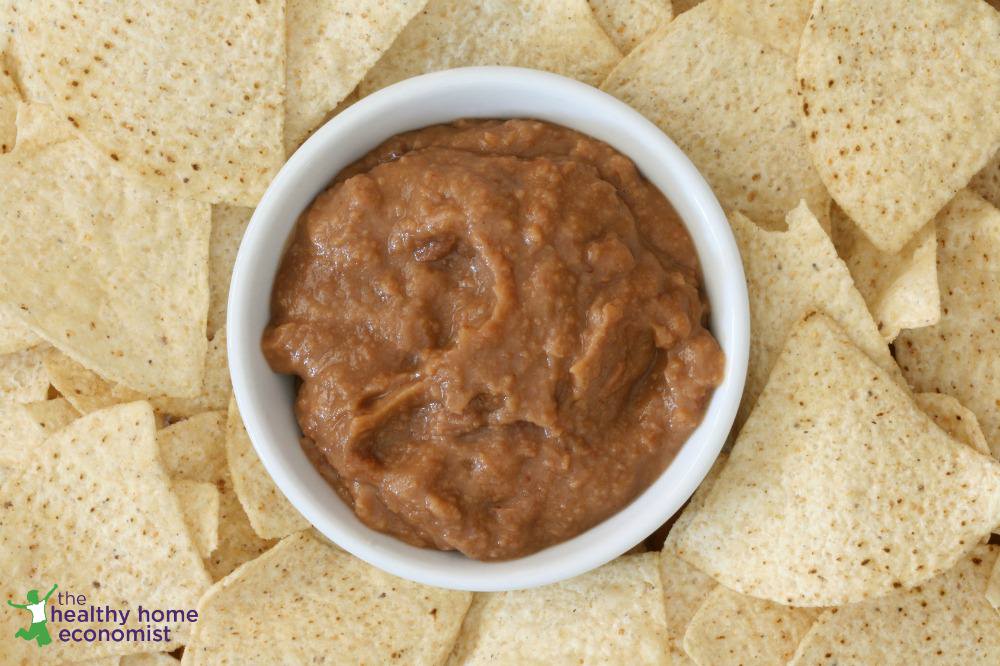
When someone mentions the words “Mexican food” to me, I immediately think of a dish that is comprised primarily of corn and beans. Of course, there are many other ingredients in Mexican food, but these two stick in my mind as the primary ones. I have always loved the taste of Mexican food, but only ate it occasionally as it didn’t settle all that well in my stomach.
I never suffered any real issues from it, but the fact remains that I didn’t experience as much satisfaction when I ate it like I did with a steak, salad, and baked potato dinner. It also seemed curious to me why I was always hungry again within a hour or two of eating Mexican food even if I felt stuffed when I left the restaurant.
When I first began studying traditional diet and cooking methods, I immediately realized why Mexican food was not my first choice for dinner. For one, the vast majority Mexican restaurants, unless they are truly authentic, do not prepare corn and beans properly. This one simple omission leads to the lack of satisfaction and even digestive distress when one eats a Mexican meal. Lack of satisfaction indicates poor digestibility of the food, in this case, the corn and beans. Lack of digestibility causes hunger to re-emerge soon after eating as well. In a nutshell, not preparing the corn and beans properly causes a domino effect of lack of satisfaction from the meal, rapid return of hunger, and finally overconsumption of calories to compensate for the poor digestibility of the food!
How did traditional South American cultures prepare corn and beans? First of all, the beans are not simply put in a pot with water and cooked until soft. Beans are actually a type of legume which requires careful preparation prior to cooking. Traditional societies that relied on legumes take great care to soak the beans for at least 24 hours before they are cooked.
After soaking, the water is poured off and the beans are thoroughly rinsed. The first time I did this, I was amazed at all the white foam that came to the top of the soaking water! This foam represents all the enzyme inhibitors, including saponins and phytic acid, coming out of the beans into the water. Can you believe vegans actually consume this toxic soaking water to make the egg replacement aquafaba?
Soaking not only eliminates these anti-nutrients from the beans but also helps to start the breakdown of complex sugars that are hard to digest otherwise. When soaking, it is best to add a bit of lemon juice, whey (the clear, liquid portion of yogurt), or apple cider vinegar to the soaking water to ensure proper water acidity. A little acidity in the water assists with the rapid breakdown of the enzyme inhibitors. One tablespoon lemon juice, raw whey, store bought or homemade apple cider vinegar added to the soaking water per cup of dried beans is a good rule of thumb.
Please note that fava beans are the one exception to this rule . Fava beans are best avoided entirely, as they contain an antinutrient that is not neutralized by soaking, sprouting, or even fermenting. No worries, as there are plenty of other delicious beans to choose from to complement your Mexican dish!
Since beans need to be soaked for at least 24 hours prior to cooking, you might be thinking that this eliminates beans as a spontaneous choice for dinner. Not so! When I make beans, I make an extra large pot them and then freeze in gallon sized freezer bags. This way, if want a quick dinner of beans and rice, you have a bag of already soaked, already cooked beans ready to be reheated sitting in the freezer! A pot of homemade, easy to digest, delicious chili is only 20 minutes away when you have the beans already prepared and ready to go in the freezer. Traditional cooking methods need not ever be inconvenient!
You will be delighted at how easy beans are to digest and how satisfied you feel after eating them when you follow traditional food preparation methods! Beans offer a high quality plant protein that is very cost effective for the budget conscious, so they are a great meat substitute a few times a week. Throw away that Bean-O! You won’t need it when you soak the beans first prior to cooking.








And I am a fan of both of yours! Jerica and Matt have a wonderful farm and this is definitely a worthy cause! 😀 Shady Grove is about 2 hours away from me, but they are the closest thing to “local” pasture raised animal products my family has… other than the chickens in my back yard!
great info! do you recommend sprouting the beans as well? doesn’t this improve upon their digestibility even more?
I like your blog. Do you think you could use a darker type? It is hard to read.